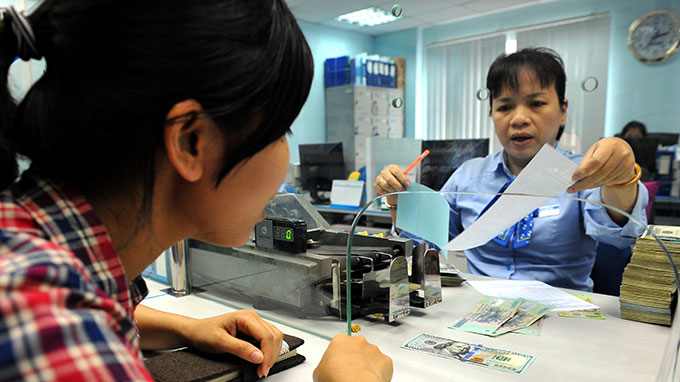The State Bank of Vietnam (SBV), the country’s central bank, has stepped up its anti-dollarization drive by tightening rules on the trade of foreign currencies in a circular that takes effect on Monday.
>> An audio version is available here
According to Circular 15 issued by the SBV on Friday, when conducting foreign exchange transactions with banks, businesses and individuals are required to present papers and documents proving the purpose of the transactions and the amount and timing of the payments.
Those papers and documents are a must for banks to sell foreign currencies for immediate delivery.
Banks are not allowed to charge fees when they sell foreign currencies to businesses, according to the fiat.
Recently, due to expectations that the exchange rate between the U.S. dollar and the Vietnamese dong will rise, many organizations and individuals have increased speculation in the greenback, according to the SBV.
Nguyen Hoang Minh, deputy director of the Ho Chi Minh City branch of the central bank, told Tuoi Tre (Youth) newspaper that in August alone, the balance of foreign currency deposits of organizations and individuals rose nine percent and 5.06 percent, respectively.
Importers have also bought more foreign currencies for future delivery, thus raising pressure on supply by Vietnamese banks, Minh said.
According to experts, this regulation is the next step of the central bank to reduce foreign currency hoarding, part of the SBV’s anti-dollarization scheme.
On September 28, the SBV cut U.S. dollar deposit rates to 0.25 percent per year for individuals and 0 percent per year for organizations.
The move was aimed at increasing the gap in deposit rates between the dong and the dollar, thereby making the local currency more appealing while reducing the dollarization of the national economy.
The measure was taken at a time when many Vietnamese are sticking to the greenback in the wake of the dong devaluation, and amid hopes that the dong’s value will fall further against the dollar in the last quarter of this year, which would debunk the SBV’s pledge that there will be no more devaluation until early 2016 .
In August Vietnam devalued the dong by one percent for the third time this year and widened the trading band for VND-USD transactions from one percent to three percent, a move the SBV made to cope with the devaluation of the Chinese yuan.
All this technically caused the Vietnamese dong to lose five percent of its value, while the central bank had stressed that the dong would not be depreciated by more than two percent against the greenback in 2015.
Like us on Facebook or follow us on Twitter to get the latest news about Vietnam!



















































